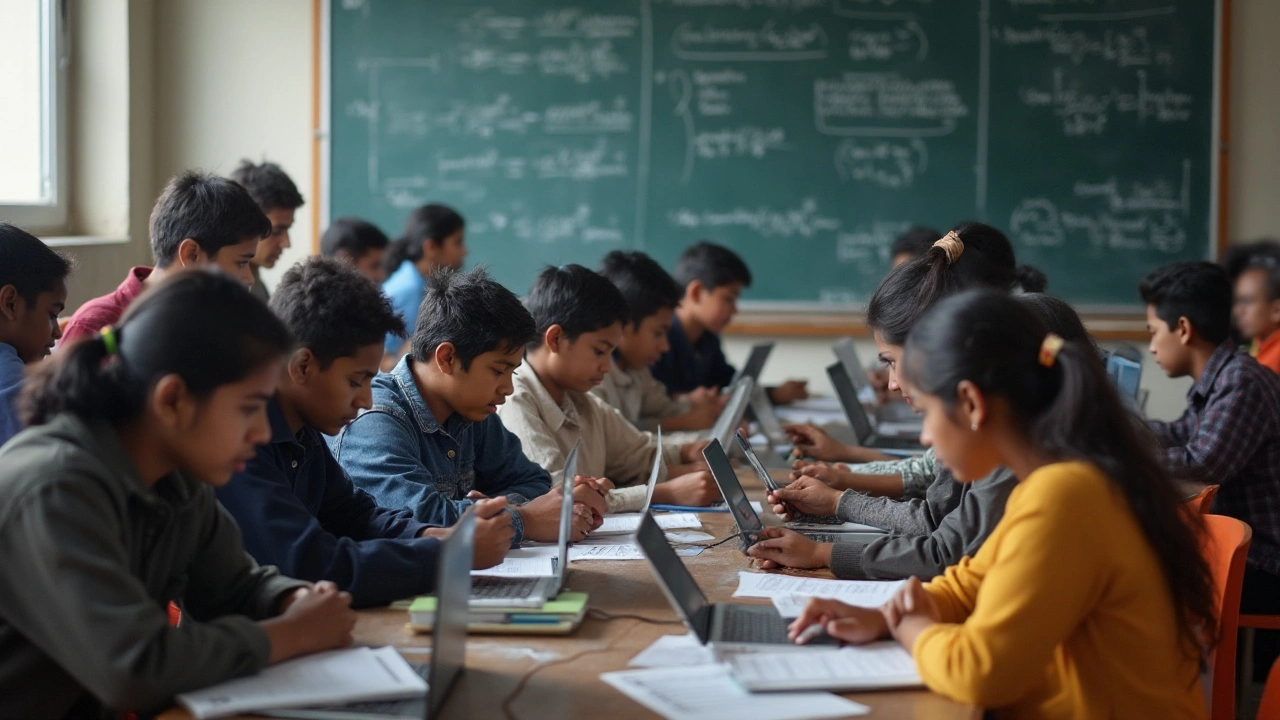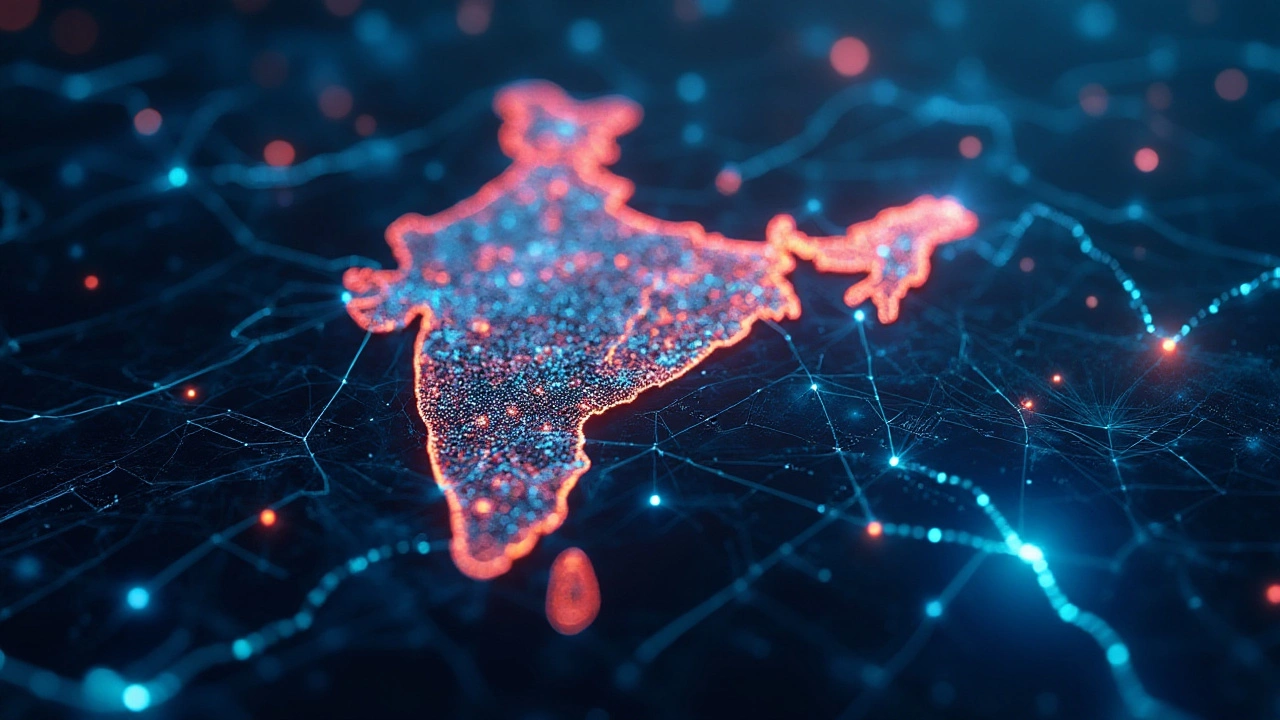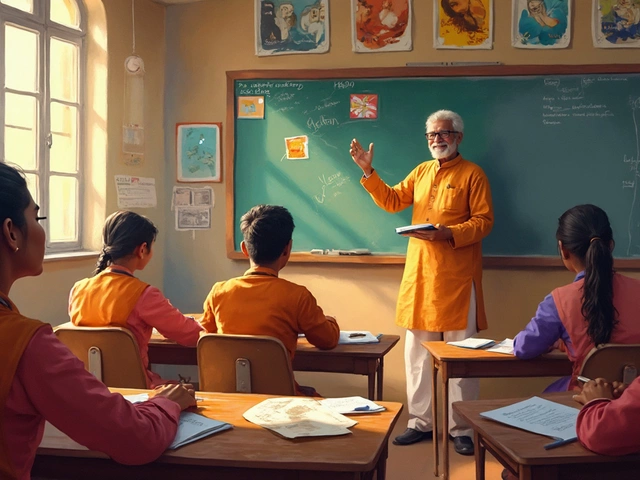
The Indian Institutes of Technology (IITs) are not just a collection of engineering colleges in India; they are an aspiration, a dream woven into the fabric of countless young minds wishing to make it big in the world of technology and innovation. Each year, students across the nation prepare rigorously for the Joint Entrance Examination (JEE), hoping to secure a seat in these coveted institutes.
But how many seats are truly available, and what does one need to know to accurately navigate this intricate landscape? In this article, we look into the current seat availability across IITs, the processes involved, and guide aspiring students with insights and strategies. From understanding the seat distribution to tackling the challenging admission tests, we aim to equip you with valuable knowledge to chart your course towards becoming a part of the IIT legacy.
- Understanding the IIT System
- Seat Distribution Across Institutes
- Admission and Reservation Policies
- Preparing for the JEE Exams
- Tips for Aspiring Students
Understanding the IIT System
The Indian Institutes of Technology, or IITs, stand as a symbol of academic excellence across the globe. Established to nurture some of the brightest minds in the field of engineering in India, these institutes have carved out a reputation for producing alumni that have spearheaded innovation and leadership worldwide. Currently, there are 23 IITs scattered across India, each offering a unique blend of academic rigor and research opportunities. Originally started with the IIT Kharagpur in 1951, the IIT system has expanded significantly since, with each new campus contributing to a growing legacy of academic superiority and cultural diversity.
The IITs function under the governance of the Institutes of Technology Act, 1961, which declares them as institutions of national importance. This status not only underscores their significance in India's higher education landscape but also ensures considerable autonomy that they leverage to innovate and lead in educational practices. The wide array of undergraduate, postgraduate, and doctoral programs they offer spans disciplines beyond engineering. Courses in design, management, and applied sciences enrich the academic tapestry, while various centers of excellence focus on cutting-edge research, keeping the IITs on the forefront of technological advancement.
Admission into the IITs remains as competitive and demanding as ever. The process is principally anchored around the Joint Entrance Examination (JEE), which is bifurcated into two parts: the JEE Main and the JEE Advanced. The latter acts as a gateway exclusive to the IITs, screening only the top candidates from the JEE Main. Over a million students register annually for the JEE Main, with just around 2% going on to clear the JEE Advanced. This fierce competition emphasizes the high bar these institutions set and maintain. Prospective students, therefore, need not only a solid academic foundation but also strategic preparation plans to succeed.
In recent years, there has been a conscious effort towards making education inclusive through reservation policies. Around 15% of the seats are reserved for Scheduled Castes, 7.5% for Scheduled Tribes, and 27% for Other Backward Classes, according to the central government's mandates. Such reservations aim to ensure that more students from historically disadvantaged backgrounds gain access to high-quality education, thus fostering diversity and inclusivity within the academic community. Approximately 10% of seats have also been earmarked for the Economically Weaker Sections (EWS), which further widens the accessibility potential of these institutes.
The holistic approach within the IIT campuses extends beyond academics, creating an environment that fosters overall growth. Vibrant cultural festivals, inter-IIT competitions, and numerous student-led initiatives are a regular part of campus life, ensuring students graduate not just as academicians or engineers but as well-rounded individuals prepared to navigate varying challenges. As Sundar Pichai, a notable IIT Kharagpur alumnus and CEO of Alphabet Inc., eloquently put it, "The education you receive is not just a foundation in engineering; it’s a life-defining experience." Innovators like Pichai exemplify the impact an IIT admission can have on one's professional trajectory, making these institutions a benchmark of global educational standards.
Seat Distribution Across Institutes
When aiming for a seat at the Indian Institutes of Technology, students must first understand the intricate chessboard of seats distributed across these venerable institutions. The number of available seats is not just a static figure but a story of evolution, driven by investment in educational infrastructure and policy shifts focused on increasing diversity and inclusivity. As of the latest information available, there are approximately 16,000 undergraduate seats across the 23 IITs, each offering distinctive specializations in engineering and technology. This total fluctuates annually, reflecting policy updates and expansions in campuses. Each IIT might seem similar in structure, but the number of seats allocated to different disciplines can vary significantly from one to another, depending on the institute's focus and strengths.
The distribution often takes into account several parameters, such as core engineering programs, which typically have more seats compared to emerging interdisciplinary areas. For instance, traditional engineering streams like civil, mechanical, and electrical might offer more seats than newer branches such as data science and artificial intelligence, reflecting the demand-supply dynamics and the institution's strategic focus. The premier IITs like Mumbai, Delhi, and Kanpur traditionally maintain a higher count of seats due to their historical establishment and expanded infrastructure. To illustrate this dynamic, a reputed source stated,
"IIT Bombay continues to lead in providing a large number of seats, consistently adapting to the demands of the industry and technology shifts."Understanding these facets provides students an edge as they align their aspirations with the institutes most likely to cater to their career goals.
Reservation and Quota System
Seats are not merely allocated on a general basis; rather, they are segmented according to a meticulously crafted reservation system that takes into account various social and economic factors. According to the reservation policy, 15% of the total seats are reserved for Scheduled Caste (SC) applicants, 7.5% for Scheduled Tribes (ST), and 27% for Other Backward Classes (OBC-NCL). Additionally, 10% of seats fall under the Economically Weaker Sections (EWS) category since its introduction, addressing wider access and equity in higher education. This careful distribution is integral to ensuring an inclusive academic environment, reflecting India's commitment to provide equal educational opportunities.
The balancing act is further enhanced by IITs consistently tweaking seat allocation to meet changing educational demands. For instance, the decision to incrementally increase seats each year is matched by initiatives to develop better infrastructure, ensuring that educational standards are maintained across all IITs. IIT seats 2024 are thus distributed with a deliberate blend of tradition and modern policies, ensuring that every aspirant, regardless of background, stands a fair chance of admission, provided they meet the competitive entry requirements. Thus, comprehending this seat distribution arrangement is crucial as potential applicants strategize their entry into one of the world’s foremost engineering collectives.

Admission and Reservation Policies
When it comes to the admission process at the Indian Institutes of Technology, the dynamics are as challenging as the exams themselves. The coveted seats are allocated through a rigorous evaluation system that begins with the Joint Entrance Examination (JEE) which is split into two stages: JEE Main and JEE Advanced. To land a seat in these prestigious institutions, students must first pass the JEE Main exam—often filtering out the top performers who will then compete in the JEE Advanced. The success in these exams becomes a numeric gateway into a variety of engineering streams offered by the IITs.
One cannot discuss admissions without recognizing the reservation policies that are integral to the IIT system. These policies are pivotal in ensuring inclusivity, given the diverse socioeconomic landscape of India. The reservation system provides reserved seats for various categories including Scheduled Castes (SC), Scheduled Tribes (ST), and Other Backward Classes (OBC-NCL). Currently, the distribution generally follows a structure such as 15% for SC, 7.5% for ST, and 27% for OBC-NCL. Notably, there is also a reservation for Persons with Disabilities (PwD) at around 5% of the seats across all categories. This structured approach to seat allocation is crucial to promoting diversity and offering opportunities to students from different backgrounds.
An insightful observation was made by renowned educationist Dr. Anil Sahasrabudhe, "The reservation policies ensure fair representation from all sections of society, bridging the educational divide that persists in our country."
Delving deeper into these policies, we see the complexity that warrants a meticulous understanding of how seats are distributed beyond just the general category. There are also supernumerary seats available for foreign students, making IITs an increasingly global environment. Additional reservations such as those for the Economically Weaker Section (EWS), recently introduced, add another layer to the admission process, accounting for about 10% of seats. This initiative aims to offer equitable educational opportunities to candidates from financially constrained backgrounds.
A clear takeaway here is the need for aspirants to be fully informed about the reservation parameters when applying. Not only does this help them understand their own positioning better, but it also allows them to strategize their preparation and selection of courses more effectively. For instance, students from reserved categories must ensure that they have all requisite documentation ready during the application process to avoid any hindrances in their path to these dream institutions.
It's essential, too, for applicants to stay updated with any changes to these policies, which may vary slightly each academic year based on government regulations and institutional updates. Prospective students should regularly visit the official JEE and IIT websites for the latest information to ensure they are not missing out on important updates or deadlines. Such vigilance can be a decisive factor in turning their IIT aspirations into reality.
This systematized method of seat allocation reflects a mindful balance between meritocracy and social justice, ensuring that the doors of opportunity swing open wide for students hailing from every corner of the nation. By appreciating and understanding these admission and reservation policies, aspirants are better equipped to navigate their IIT journey, enhancing their chances of securing a place in one of these esteemed institutions.
Preparing for the JEE Exams
The journey to securing a seat in the prestigious Indian Institutes of Technology is as rigorous as it is rewarding. Each year, above a million aspirants dream of joining these institutes, but only a selected few make it through the competitive JEE Exams. The path to cracking this entrance is not just about hard work; it's also about strategized preparation and mental resilience. From choosing the right study materials to understanding the intricate patterns of past papers, every step counts. Students often find themselves engrossed in long hours of study, solving myriad problems that test their logical acumen and grasp of scientific concepts. For some, enrolling in specialized coaching classes can provide the structured environment and expert guidance required to excel.
One crucial aspect of preparing for the JEE Exams is understanding the dual structure of the exams themselves: JEE Main and JEE Advanced. While JEE Main opens the gateway to several engineering colleges, scoring high in JEE Advanced is essential for an IIT admission. JEE preparation demands a blend of clarity in fundamental concepts and the ability to apply them to complex problems. Over time, online resources have become increasingly popular, offering a plethora of mock tests and video lessons. Concerned parents, too, play their role by ensuring a balanced life for their children amidst the demands of rigorous study schedules and the pressing nature of the competition.
Table summarizing the structure of JEE exams:
| Exam | Duration |
|---|---|
| JEE Main | 3 hours |
| JEE Advanced | 6 hours (2 papers of 3 hours each) |
"Success in the JEE Exams is not just the outcome of studying hard but also about studying smart. You need to manage your time judiciously and be conscious about the quality of the resources used," says Professor Arvind Sharma, a well-respected educator in the field of engineering preparation.
As cumbersome as the preparation process might seem, students should not forget about maintaining their well-being. Retaining a healthy balance between studies and relaxation helps in rejuvenating the mind, ensuring more effective learning. Techniques like meditation or even a brisk walk can alleviate stress and improve concentration levels. Candidates are encouraged to join study groups, which bring the added dimension of peer learning. Here, one can exchange ideas, clarify doubts, and engage in healthy discussions that may provide different perspectives on problem-solving.
Finally, remember that the JEE Exams, though monumental, do not define one's entire future. While patience and perseverance are your anchors in this journey, keeping an open mind and exploring all opportunities can open a multitude of pathways for a fulfilling career. Thus, dive into the preparation phase with an ambitious spirit, equipped with the best resources, and a supportive environment, for it is not just about achieving an IIT seat, but also about growing through the journey itself.

Tips for Aspiring Students
Embarking on the journey to crack the JEE and secure a place at one of the esteemed IITs in India can be daunting yet incredibly rewarding. First and foremost, it's crucial to start your preparation with a clear and strategic mindset. Break down your syllabus into manageable sections and allocate specific time frames for each topic. Prioritize foundational concepts that are often tested in exams, ensuring a deep understanding rather than superficial knowledge. Remember, consistency is key; regular study sessions are far more effective than sporadic cramming.
It's important to create a strong support system around you – both academic and emotional. Engage with a community of like-minded peers either through online forums or study groups. Having someone to discuss tough problems with can lead to new insights and keep you motivated during challenging times. Consider seeking guidance from senior students, educators, or mentors who have successfully navigated the JEE landscape. Their experiences can provide invaluable insights and might even introduce you to study techniques or resources you hadn’t considered.
Another practical tip is to integrate practice tests into your routine. Simulating exam conditions can help you manage stress levels and improve time management skills during actual exams. Allocate specific days for these mock tests and critically analyze your performance after each attempt to identify areas of improvement. JEE preparation is not just about hard work; it's about smart work. Use data to your advantage – track your progress over time, and notice trends in your strengths and weaknesses.
Do remember to balance your studies with adequate rest and recreation. Academic burnout is a genuine hurdle, and maintaining your physical and mental well-being is crucial. Incorporate regular breaks, enjoy hobbies, and ensure you get ample sleep. Physical exercise such as jogging or yoga can refresh your mind and enhance concentration levels. A well-rested mind is far more efficient and creative than an exhausted one.
Approaching your preparation with discipline and determination will inevitably guide you towards success. As Dr. APJ Abdul Kalam once said, "You have to dream before your dreams can come true," reminding us that a focused dream coupled with hard work can lead to extraordinary results. For aspiring students looking to join the ranks of the talented engineers India is known for, this journey is just the beginning. Embrace it with passion, patience, and perseverance.





